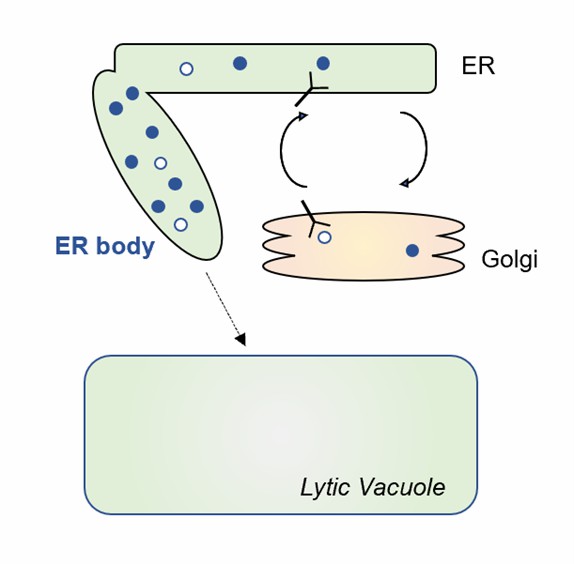ER body is a spindle-shaped and large structure, about 10 μm in length and 1 μm in width. Its main component is PYK10, a glucosidase with endoplasmic reticulum resident signal KDEL at the C terminus. In the event of injury, stress, or pathogen infection, it can react with the matrix to generate toxins and play a defensive role. In addition, the ER body also contains two stress-induced proteinases, RD21, and VPE.
Lifeasible provides functional analysis of ER body, which is responsible for storing and transporting hydrolytic enzymes, such as glucosidase and proteinases, to help our customers worldwide in the field of plant science. Our experts will answer your questions comprehensively and carefully and help you solve the problems in your studies. We guarantee satisfied and reliable results for our customers all over the world.
 Fig.1. ER-derived compartments for hydrolytic enzyme storage.
Fig.1. ER-derived compartments for hydrolytic enzyme storage.
Lifeasible offers functional analysis of the ER body with customized strategies and design. Our advanced technical platforms help our clients solve the problems they may encounter in research based on decades of experience. If you are interested in our services or have any questions, please feel free to contact us or make an online inquiry.
Lifeasible has established a one-stop service platform for plants. In addition to obtaining customized solutions for plant genetic engineering, customers can also conduct follow-up analysis and research on plants through our analysis platform. The analytical services we provide include but are not limited to the following:
Get Latest Lifeasible News and Updates Directly to Your Inbox
Adaptive Evolutionary Mechanism of Plants
February 28, 2025
Unraveling Cotton Development: Insights from Multi-Omics Studies
February 27, 2025